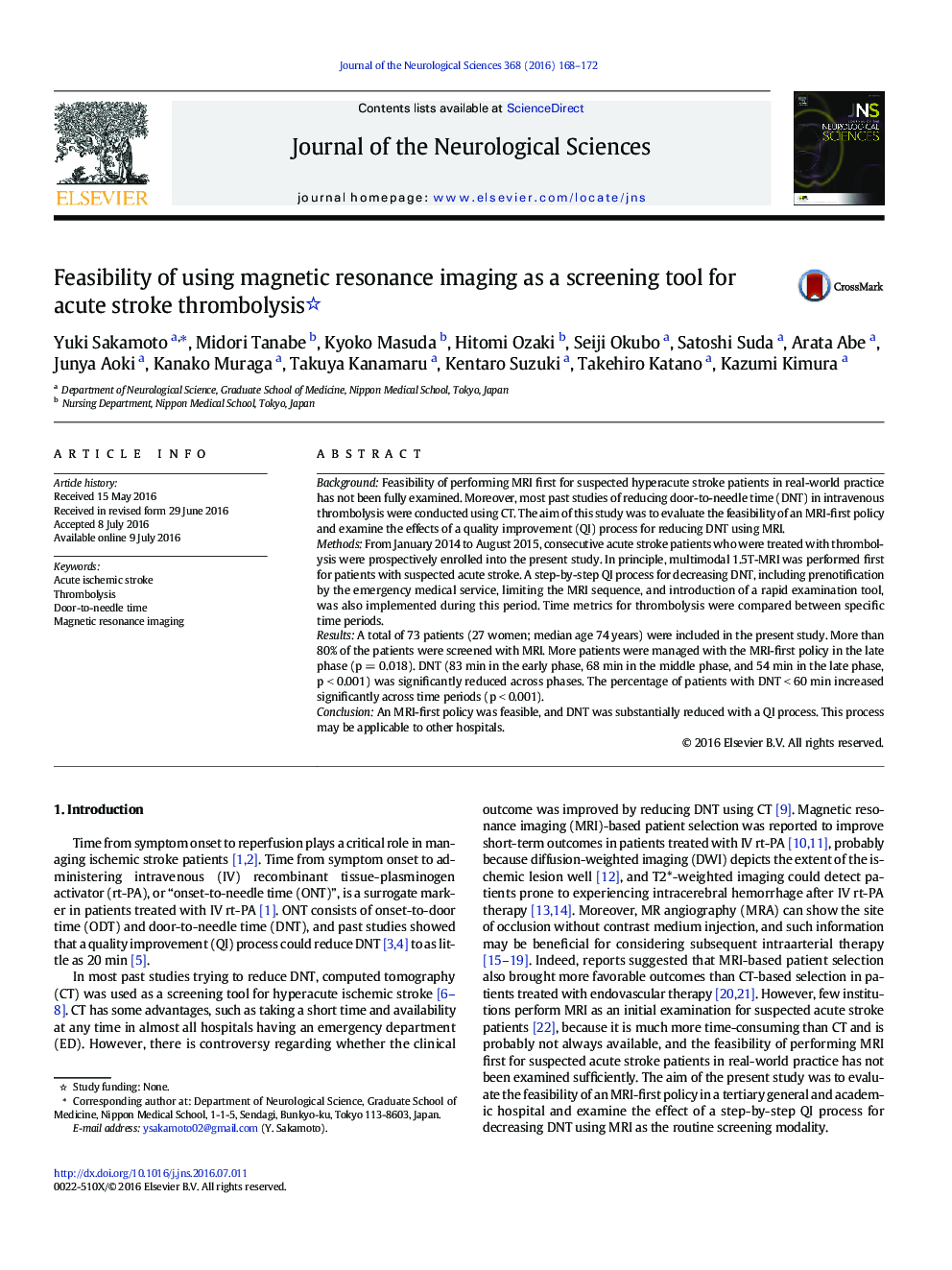| Article ID | Journal | Published Year | Pages | File Type |
|---|---|---|---|---|
| 1912970 | Journal of the Neurological Sciences | 2016 | 5 Pages |
•Feasibility of MRI-first policy and the effect of quality improvement process for reducing door-to-needle time in hyperacute stroke thrombolysis was assessed.•MRI-first policy in hyperacute stroke management was feasible, more than 80% of the patients were screened with MRI.•Door-to-needle time was substantially reduced with a quality improvement process.
BackgroundFeasibility of performing MRI first for suspected hyperacute stroke patients in real-world practice has not been fully examined. Moreover, most past studies of reducing door-to-needle time (DNT) in intravenous thrombolysis were conducted using CT. The aim of this study was to evaluate the feasibility of an MRI-first policy and examine the effects of a quality improvement (QI) process for reducing DNT using MRI.MethodsFrom January 2014 to August 2015, consecutive acute stroke patients who were treated with thrombolysis were prospectively enrolled into the present study. In principle, multimodal 1.5T-MRI was performed first for patients with suspected acute stroke. A step-by-step QI process for decreasing DNT, including prenotification by the emergency medical service, limiting the MRI sequence, and introduction of a rapid examination tool, was also implemented during this period. Time metrics for thrombolysis were compared between specific time periods.ResultsA total of 73 patients (27 women; median age 74 years) were included in the present study. More than 80% of the patients were screened with MRI. More patients were managed with the MRI-first policy in the late phase (p = 0.018). DNT (83 min in the early phase, 68 min in the middle phase, and 54 min in the late phase, p < 0.001) was significantly reduced across phases. The percentage of patients with DNT < 60 min increased significantly across time periods (p < 0.001).ConclusionAn MRI-first policy was feasible, and DNT was substantially reduced with a QI process. This process may be applicable to other hospitals.
